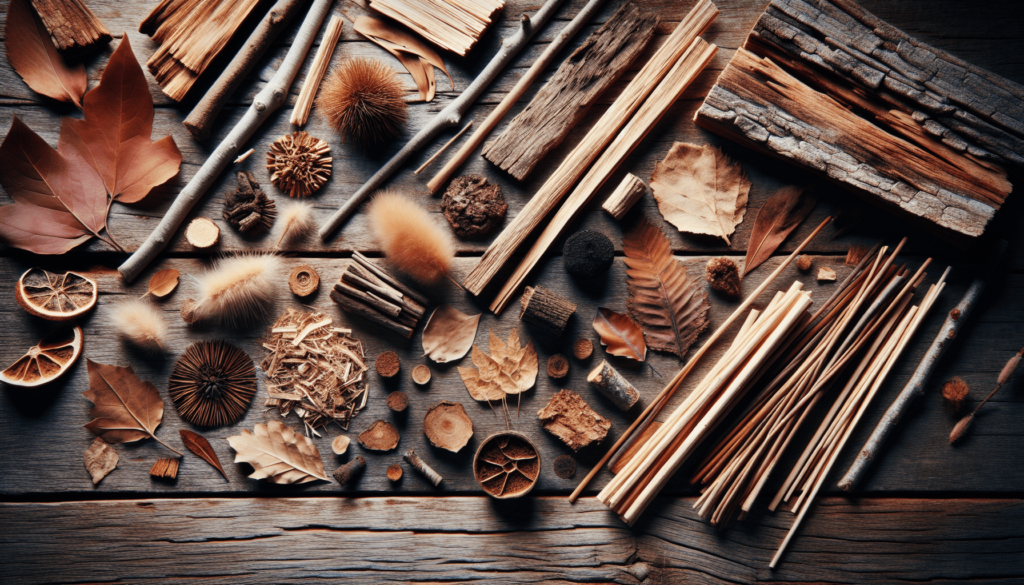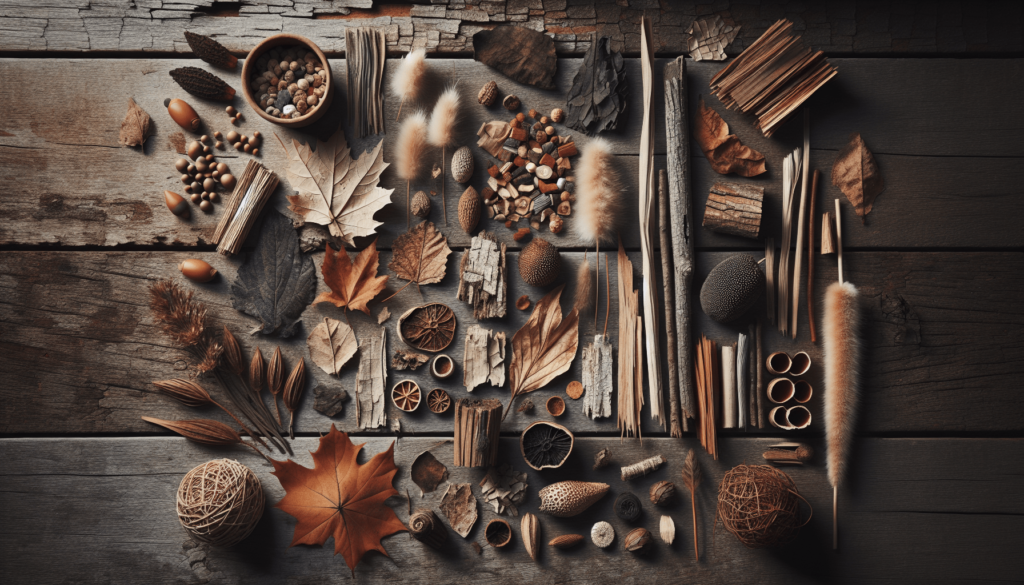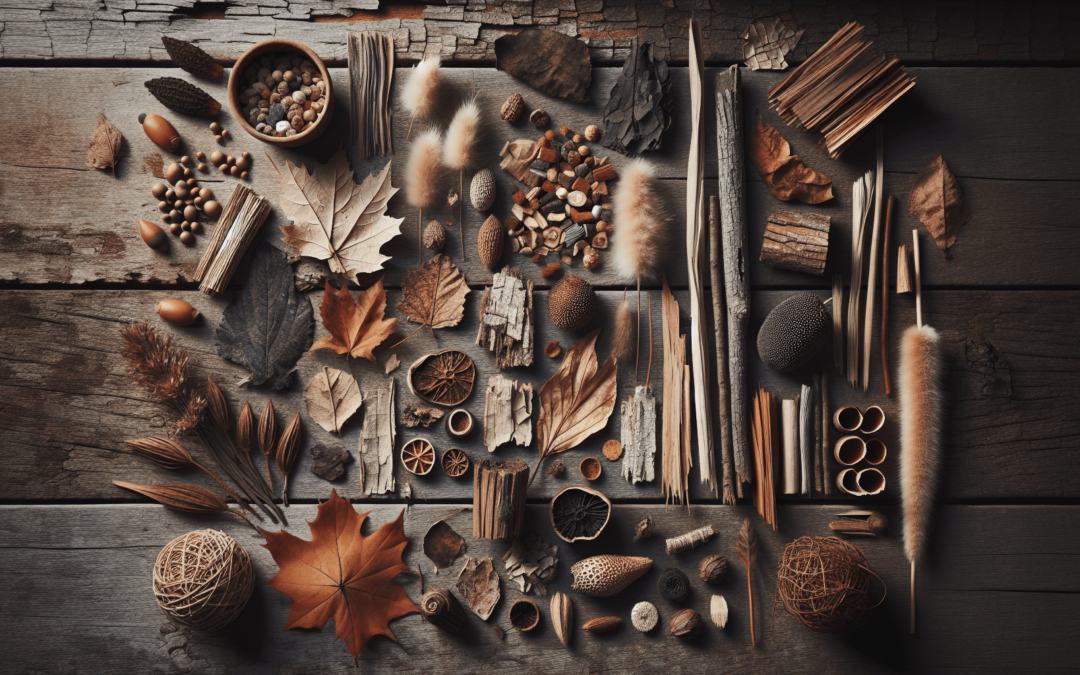In “Identifying And Using Natural Tinder,” you’ll discover the fascinating world of natural fire starters that can be found right in the great outdoors. This guide will teach you how to recognize and effectively use materials like dry leaves, bark, and even some surprising substances to spark a campfire with ease. Whether you’re a seasoned adventurer or a novice camper, you’ll gain the practical skills needed to stay warm and cook meals on your next outdoor excursion. Dive in and get ready to ignite your wilderness experience!
Identifying And Using Natural Tinder
Have you ever found yourself in a situation where you needed to start a fire but didn’t have any man-made fire starters at hand? In moments like these, being able to identify and use natural tinder can mean the difference between a cozy campfire and a chilly, uncomfortable night outdoors. Whether you’re an avid camper, a survivalist, or simply someone who loves spending time in nature, knowing how to find and use natural tinder is a valuable skill that can come in handy more often than you’d think.
What is Natural Tinder?
Natural tinder consists of materials found in the wild that can easily catch a spark or a small flame. These items are usually lightweight, dry, and fibrous. Think of them as the equivalent of newspaper or cotton balls soaked in petroleum jelly, only found in nature. In various outdoor environments, you’ll find different natural tinder sources, and learning how to identify and utilize them effectively can be a lifesaver.
Why Natural Tinder Matters
Understanding and utilizing natural tinder is more than just a cool skill to impress your friends. It’s an essential aspect of wilderness survival. Here are a few reasons why:
- Reliability: Synthetic fire starters can fail or be lost. Natural tinder is always available if you know where to look.
- Self-Sufficiency: Being able to start a fire with what you find around you enhances your self-reliance and survival skills.
- Environmental Awareness: Foraging for natural tinder helps you develop a deeper connection and understanding of your surroundings.
Identifying Natural Tinder
To become proficient in using natural tinder, you need to know what to look for in different environments. Here’s a breakdown of some of the most common types and where you might find them.
Plant-Based Tinder
Dry Grass
Dry grasses are excellent tinder because they are fine, dry, and abundant in many areas. Gather a handful of dry grass and form it into a loose ball. The dry, airy structure allows it to catch a spark easily. Make sure to collect it from a dry spot to ensure maximum efficiency.
Pine Needles
Pine needles, particularly when dried out, make great tinder. These needles are usually found under pine trees and can be collected in large quantities. They have a resinous quality that helps them catch fire quickly.
Bark Strips
Thin strips of bark from trees like birch or cedar can serve as excellent tinder material. Birch bark, in particular, is effective even when wet due to its natural oils. Peel thin strips and break them down into smaller fibers to enhance their ability to catch a spark.
| Tree Type | Bark Characteristics | Best Use |
|---|---|---|
| Birch | Thin, papery, contains natural oils | Effective even when damp |
| Cedar | Fibrous, can be broken into strands | Needs to be dry |
| Aspen | Peeling, flaky | Good for layering under other tinder |
Cottonwood and Willow Seeds
In the spring, the air is often filled with tiny seeds from cottonwood and willow trees, which are covered in soft, fluffy material. These can be gathered and used as tinder, though they require careful handling because they’re lightweight and can blow away easily.
Wood-Based Tinder
Fatwood
Fatwood comes from the heartwood of pine trees and is saturated with resin. This resin-rich wood ignites easily and burns hot. It can often be found in the stumps of pine trees or in fallen branches. Cutting into the wood will reveal a sticky, aromatic substance that is highly combustible.
| Property | Description |
|---|---|
| Appearance | Honey-colored, resinous |
| Location | Found in pine stumps and fallen branches |
| Combustibility | Highly flammable |
Punk Wood
Punk wood is partially decayed wood that is still dry. When crumbled, it produces a fine, almost dust-like material that can quickly take a spark. Look for wood that is spongy and light but not wet. This type of wood is usually found in older, dead trees.
Seed-Based Tinder
Cattail Fluff
The cattail plant produces a dense, fluffy seed head that is almost unmatched in its ability to catch a spark. This fluff can be gathered easily by shaking the head of the plant and collecting the seeds.
Milkweed Pods
Like cattails, milkweed pods produce seeds surrounded by silky, fluffy material that can catch a spark and burn quickly. These are typically found in meadows and along the edges of forests.
Fungus-Based Tinder
Tinder Fungus (Fomes fomentarius)
Tinder fungus is one of the most reliable sources of natural tinder. It can be found on the trunks of dead or dying hardwood trees. Break off a piece and crumble it into small, fine particles to use as tinder.
| Fungus Type | Preferred Trees | Utilization |
|---|---|---|
| Tinder Fungus | Dead/Dying hardwoods like birch or beech | Crumble into fine particles to catch a spark |
| Dryad’s Saddle | Dead/Dying hardwoods | Shave into thin strips, dry them out |
| Chaga | Birch trees | Break into small pieces or dust |
Animal-Based Tinder
Birds’ Nests
While you shouldn’t disturb active nests, abandoned birds’ nests can be a fantastic source of tinder. They are often made with small twigs, grass, and feathers, all of which are highly flammable.
Dried Animal Dung
In some environments, dried animal dung (particularly from herbivores like cows and horses) can serve as an effective tinder source. Make sure it is completely dry before attempting to use it.

Preparing Natural Tinder for Use
Once you’ve identified and gathered your natural tinder, the next step is to prepare it for use. The goal is to increase its surface area to maximize its ability to catch a spark.
Breaking Down Fibrous Materials
When using materials like dry grass, bark strips, or pine needles, you’ll want to break them down as much as possible. This can be done by:
- Shredding: Shred the material into fine pieces with your hands.
- Crushing: Crush the material to make it as fine as possible.
- Twirling: You can twist fibers together to create a loose bundle that will catch a spark more easily.
Creating a Tinder Bundle
A tinder bundle, sometimes called a “bird’s nest,” is a tightly packed ball of tinder material designed to catch a flame quickly. To make a tinder bundle:
- Start with a core of fine, dry material like seed fluff or shredded bark.
- Surround the core with slightly larger, coarser material like dry grass or pine needles.
- Finally, add an outer layer of slightly larger, more durable materials like small twigs or bark strips.
The idea is to create a structure that catches a spark in the center and quickly grows into a flame.
Ensuring Dryness
If your tinder is slightly damp, it will be much harder to ignite. Here are some tips to ensure dryness:
- Sun Drying: Lay the tinder in direct sunlight to dry it out.
- Body Heat: Place the tinder close to your body (e.g., in a pocket) to use your body heat to dry it.
- Wind Drying: Expose the tinder to a gentle breeze, which can help wick away moisture.
Using Natural Tinder
Now that your tinder bundle is ready, it’s time to use it to start a fire. Here’s a step-by-step guide.
Safety First
Before you start, ensure you have a safe area free from overhanging branches and flammable materials. Clear a space and set up a fire ring if possible.
Tools for Igniting
There are various tools you can use to ignite natural tinder:
- Firesteel or Ferro Rod: A modern, reliable tool that produces sparks.
- Flint and Steel: A traditional method that involves striking a piece of steel against flint to produce sparks.
- Magnifying Glass: On a sunny day, you can use a magnifying glass to focus sunlight onto the tinder.
- Bow Drill: A primitive but effective method using friction.
Steps to Ignite
- Arrange Kindling and Fuel: Nearby, have a pile of kindling (small sticks and twigs) and larger pieces of fuel wood ready to add to the developing flame.
- Ignite the Tinder: Use your chosen ignition tool to produce a spark and direct it at the center of your tinder bundle.
- Blow Gently: Once the tinder catches a spark, gently blow on it to increase the heat and encourage a flame to develop.
- Transfer to Kindling: Once the flames take hold, carefully transfer the burning tinder to your prepared kindling pile.
- Build Up the Fire: Gradually add larger pieces of wood as the kindling catches fire, nurturing the flame into a sustainable fire.

Troubleshooting Common Issues
Even with the best preparation, there can be challenges in getting your fire started. Here are some common issues and how to address them:
Wet or Damp Tinder
If your tinder is slightly damp, it may not catch a spark easily. Trying to pre-dry it using methods mentioned earlier (sun drying, body heat) or adding more fine, dry material can help.
Poor Airflow
If your tinder isn’t catching, it might not be getting enough air. Adjust the arrangement of your tinder bundle to allow more oxygen to flow through.
Insufficient Spark
If your chosen ignition tool isn’t producing a strong enough spark, make sure you’re using it correctly. More vigorous striking with a firesteel or better aiming of your magnifying glass can make a difference.
Inadequate Kindling Supply
If your fire keeps going out after transferring from the tinder, you may not have enough kindling. Make sure to gather more than you think you need before beginning the ignition process.
Sustainable Harvesting Practices
While gathering natural tinder, it’s essential to do so responsibly to avoid disrupting local ecosystems. Here are a few tips:
- Leave No Trace: Only take what you need and try to gather from areas where your impact will be minimal.
- Avoid Live Plants: Focus on dead or fallen materials to preserve the living environment.
- Minimal Disruption: Refrain from stripping bark from live trees or disturbing habitats like bird nests.
Conclusion
Mastering the skill of identifying and using natural tinder isn’t just about fire-starting; it’s about embracing a deeper connection with the natural world. Next time you find yourself in the wilderness, take a moment to observe your surroundings and identify potential fire-starting materials. You’ll not only enhance your survival skills but also develop a greater appreciation for the resources nature provides.
So, whether you’re planning your next camping trip or simply want to be prepared for any situation, learning to identify and use natural tinder is a skill worth honing. Have fun exploring, be safe, and happy fire-starting!

